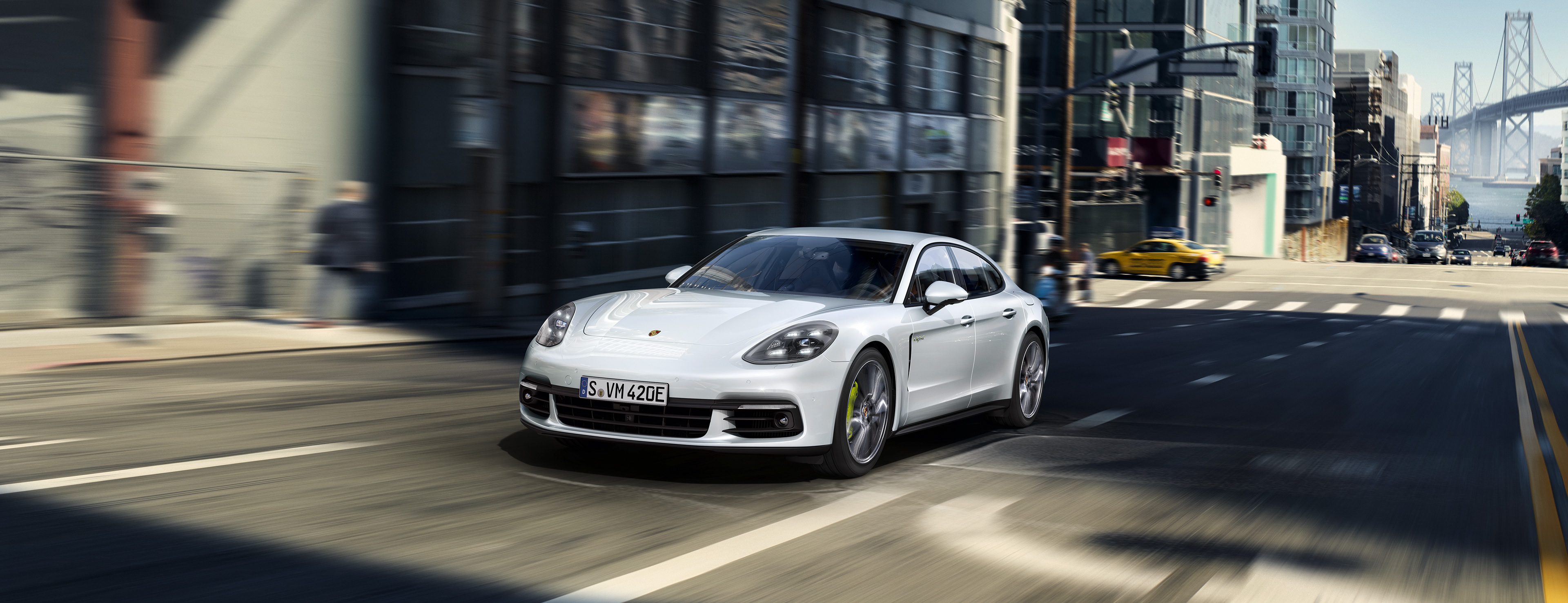
Driving modes
Boosts driving pleasure.
Curbs emissions.
In the new
![[+]](https://files.porsche.com/filestore/image/multimedia/none/e-performance-drivingmodes-contentbanner/normal/b2238a79-b5a8-11e7-b591-0019999cd470/porsche-normal.jpg)
1. E-Power mode ensures an intense, purely electric driving experience with zero fuel consumption and local emissions, e.g. when driving through town. If you need more power, the combustion engine will be switched on.
![[+]](https://files.porsche.com/filestore/image/multimedia/none/e-performance-drivingmodes-contentbanner02/normal/9a05dd06-b5a9-11e7-b591-0019999cd470/porsche-normal.jpg)
2. Hybrid Auto mode is designed to ensure the efficiency of the overall system. Depending on the situation – e.g. on country roads – the car is powered by the electric motor, the combustion engine or both. When coasting, the combustion engine is switched off – for emission-free gliding. Recuperation converts braking energy into electrical power, which can later be used for electric driving.
Increase performance and responsiveness, e.g. when overtaking: during boost, the total system torque from the electric motor and combustion engine ensure maximum propulsion.
![[+]](https://files.porsche.com/filestore/image/multimedia/none/e-performance-drivingmodes-contentbanner03/normal/14ce1431-b5ac-11e7-b591-0019999cd470/porsche-normal.jpg)
3. Hairpin bends. Steep curves. Zigzags. In SPORT mode, one thing is paramount: driving pleasure. So the combustion engine is activated by default. It accelerates together with the electric motor, thereby allowing maximum boost.
![[+]](https://files.porsche.com/filestore/image/multimedia/none/e-performance-drivingmodes-contentbanner04/normal/ea9f1024-b5ac-11e7-b591-0019999cd470/porsche-normal.jpg)
4. In SPORT PLUS mode, you experience the full performance potential – e.g. on the racetrack. The combustion engine's power reserves are used to charge the battery. The result: increased boost availability up to top speed.



